We all want our students to be successful in math. While understanding the various operations and what they mean is certainly important, automaticity in math is also essential.We need to work with our students to help them automatically recall basic facts. Once these facts are cemented, they’ll be much more successful with solving related problems and more complex equations.
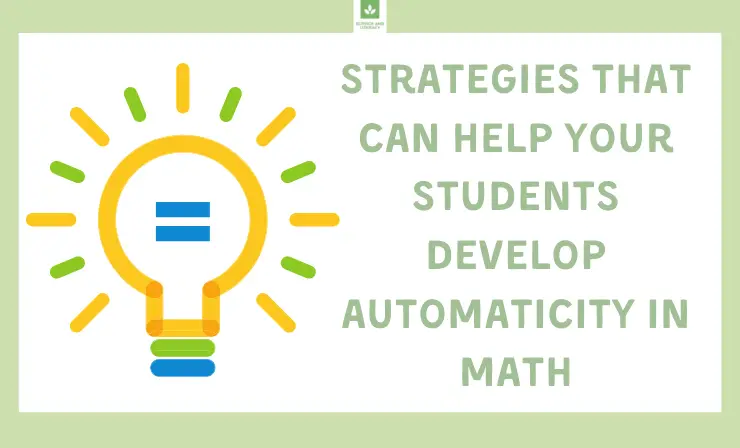
Knowing that automaticity is important and understanding how to help your students achieve it, however, are two very different things. For the first few years of my teaching career, I definitely struggled in this area.However, as I learned more, worked with my students, and conducted extensive research on the subject, I was able to help my students with master their facts. I’d love to share what I’ve learned to help you out.
Continue reading, and I’ll explain:
- Strategies you can use to help your students develop automaticity with math facts→
- What automaticity is→
- How automaticity can help students in math→
- What triangular math facts cards are and how to use them for developing automaticity→
Strategies That Develop Automaticity
Now that you have a deeper understanding of what automaticity is and why it is important in math, let’s take a look at some strategies and activities that you can use to develop automaticity in your students.
If you want your lessons to be as engaging and interesting as the ones below, follow these 5 strategies.
This morning, we sat in & filmed a 2nd grade class at Summit View Elementary School! Students engaged in a math lesson that focused on organizing measurement data through line plots. Students measured pencils in centimeters and worked together to create line plots of their data. pic.twitter.com/OvRy3OBqVM
— Formative Insights: Assessment for Learning (@FormativInsight) December 6, 2021
1.Have Students Draw Pictorial Representations of Facts
To help students develop automaticity with math facts, they need to begin by having an understanding of the different facts. One way to help them develop this understanding is by drawing images of each fact.
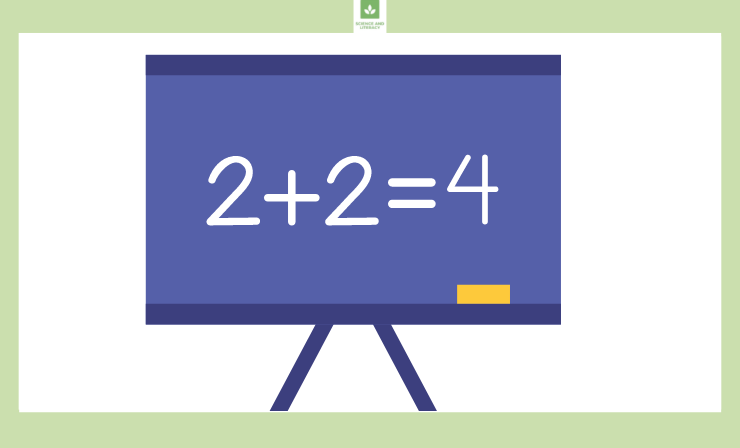
Drawing the images with paper and pencil at first will help them learn to visualize the facts in the future. Visualization is important for making sense of a problem and understanding whether a certain answer is reasonable.For example, if a student is able to visualize 8 groups of 5, they should be able to immediately realize that 8 x 5 can’t be a smaller number, such as 25.
2.Practice Making a 10
10 is such an important number in our counting system. Helping students learn and memorize the different pairs of numbers that equal 10 will go a long way in helping them develop automaticity with other related math facts.
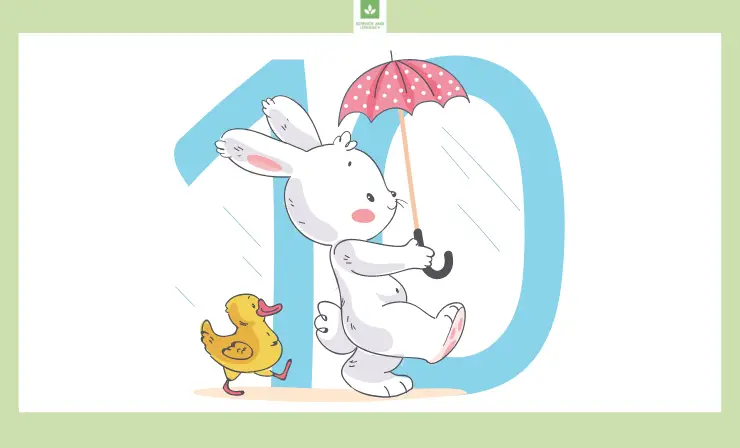
With younger students, work on having them use manipulatives to make 10 at first. For example, tens frames can be especially helpful in allowing students to see that if you have 6 counters, then 4 more are needed to make the 10.Once students become fluent with using the tens frames or other manipulatives, move to having students practice identifying the missing part of each 10 without them.
You can then use the strategy of making a 10 to help students gain the understanding that comes before automaticity for related facts, such as 5 + 8 = 13. Students can use their knowledge that 5 + 5 = 10 to say that because 8 is 3 more than 5, 5 + 8 must be 3 more than 10, or 13.Again, you’ll want students to practice explaining these strategies at first, with the goal of automatically recognizing the answers to each problem after some practice.
3.Flash Cards
Using flash cards is a great way to have students develop automaticity with math. Limit the time they have to give an answer to a few seconds, and discourage the use of fingers. This will help them answer more quickly with practice.
Around the World is a fun game. You can play with your class using flash cards to help students develop automaticity. For this game, choose one student to start and have them stand behind another student in the class.
Show those two students a flash card with a basic fact on it (whatever you’re working on). The first student to say the answer out loud ‘wins’ the round and gets to move on to the next student in the class and try to get ‘around the world’ by making it back to their seat without another student answering more quickly than they do.You could even use a camera to record the game to play back for students so they can time how quickly they were able to answer each problem.
4.Addition, Subtraction, Multiplication, and Division Facts That Stick Books
This video highlights a math book series that you can use to help your students with developing automaticity with addition, subtraction, multiplication, and division. Written by Kate Snow, the series consists of four books: Addition Facts that Stick, Subtraction Facts that Stick, Multiplication Facts that Stick, and Division Facts that Stick.
Each book includes various games and practice activities that will help your students master their facts and gain greater automaticity.
5.Rocket Math Online Games
Rocket Math offers online games that can help students improve their speed and automaticity with solving basic facts. The games only give students three second to input the answer before the time is up. This will help motivate students to memorize their facts so they can get the right answers during the game.

To introduce the Rocket Math online games to your students, use your interactive whiteboard. This will allow you to display the game for all to see and go over how to play it.
What Is Automaticity?
Automaticity refers to being able to complete a task without thinking about it. For example, when you’re walking down the hall, you aren’t consciously thinking about where you need to put each foot or what the rest of your body needs to do to stay balanced.However, it was not always this way. These are all things that you had to learn. Picture a toddler who is just learning how to walk; they have not mastered automaticity for this task yet.
Automaticity in math is very similar. It involves being able to solve basic math equations, such as 5 + 7 or 13 – 6, without thinking. For example, when presented with the problem 5 + 7, students should be able to instantly say 12. We want our students to strive to be faster than a calculator when solving these basic facts.
While thinking about making a 10 and having 2 left over to get to 12 is one strategy for solving this equation, it is not an example of automaticity. This is a strategy that can help students visualize the equation, but we want to get them to where they can quickly recall the answer.Without automaticity, students can get held up as they move on to more complex math problems. For example, if they are solving a multi-step problem, where one step involves finding the answer to 5 + 7, they’ll lose track of their learning and may lose focus on the problem as a whole.
Learning the right order to teach math facts in is also important. This video helps explain one approach to helping your students master basic addition and subtraction facts.
One key point from the video is to start with those easier math facts. Because these are easier for kids to understand and memorize, it can help students gain confidence and get them ready to develop automaticity with some of the more complex facts later.
Why Is It Helpful in Math?
Helping students develop automaticity in math is very important. I started to touch on why this is so important in the section above, but let’s take a deeper look at how automaticity will really help students to be successful with math.Students need to be automatic with their basic facts to solve the more complex problems they are faced with. Expending all their brain power to solve a fact, such as 15 – 7, in the middle of a word problem, for example, can cause them to lose track of their thinking.
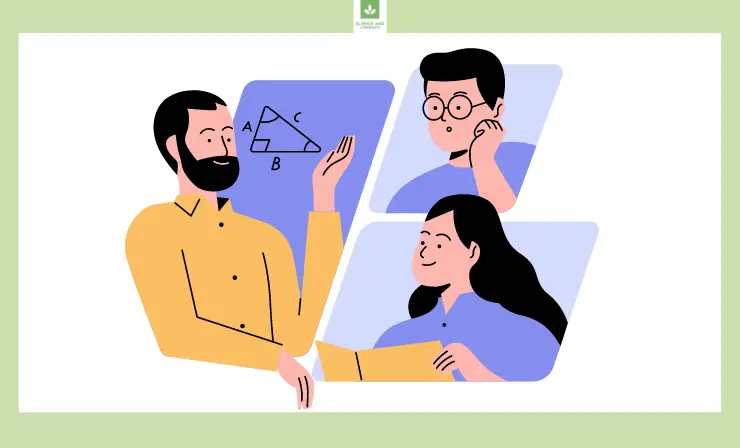
Students can get confused about which step of a problem they are on, or even lose their motivation to complete it, if they spend too long working on just one small piece of the problem.Also, without automaticity in math facts and math fact families , it will be more difficult for students to engage in the higher order thinking skills that are necessary to solve many math problems. Being held up by finding the answer to a simple addition or subtraction problem, for example, can pull necessary attention away from really evaluating and responding to all the demands of the problem.
If you are looking for a way to help your students memorize their math facts, this video is a great resource. It walks you though setting up a notebook that students can use to practice their facts.
Triangular Math Facts Cards
Triangular math fact cards are exactly what they sound like: flash cards that are shaped like a triangle. They are designed to help students master addition and subtraction or multiplication and division fact families.The cards display one number from a fact family on each corner. For example, for the addition fact family of 4, 6, and 10, the number 4 would go in one corner. 6 in one corner, and 10 in the other corner. Then, you can write a +/- in the center of the card. In order to indicate that it is an addition and subtraction family.
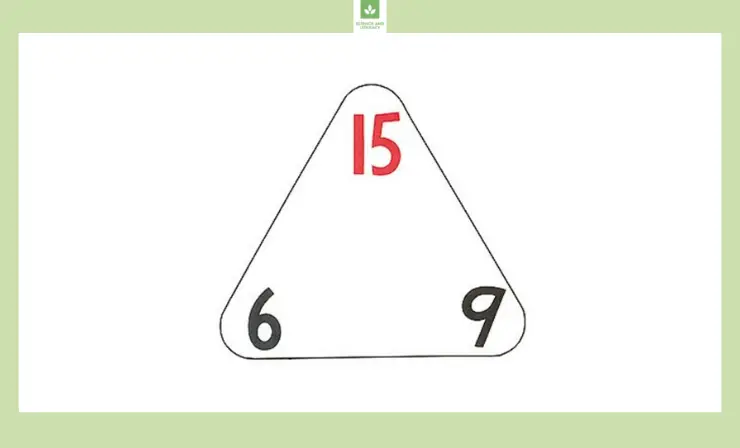
To use triangular math fact cards with your students, cover one corner of the card. Students will need to look at the two other numbers, think about the operation, and determine what is missing. Use the cards in small groups, or project them for the whole class to see using your document camera.
You can use these cards to focus on the specific operation you are working on. For example, if you are focusing on addition, cover up the whole (largest number) on the card. If you are working on subtraction, cover up one of the parts (smaller numbers) on the card. You could also have students create their own triangular math fact cards to improve their automaticity. Partially fill in some cards, and have students write the missing number in the fact family.
Watch this video to hear a teacher’s thoughts on how he likes to use triangular math facts cards with his students. You may gain some good ideas on how to incorporate them into your classroom.
Useful Recourses:
Conclusion
Choosing the right strategies for teaching math can have an enormous impact on your students’ learning and mastery. As you’ve just read, automaticity in math is so important. Hopefully, the strategies and information I’ve shared will help you impact this essential skill on your students. They will set students up for years of future success with more complex math equations and problems.
- 14 Science Experiments for Middle School — Unlock the Wonders of The World in Your Classroom - February 18, 2023
- Top 11 Sound and Voice Amplifier Apps: Enhance Audio on Your Device with the Best Volume Boosters - January 26, 2023
- 7 Creative Valentine’s Day Poster Ideas to Make Your Space Feel More Festive - January 11, 2023

Hi, helpful tips! I am an elementary school teacher. What strategy can I use for 2nd grade? Thanks!
Hey! Thanks! Well, I’d recommend you using the first two strategies. They are easy and suitable for kids of different ages)